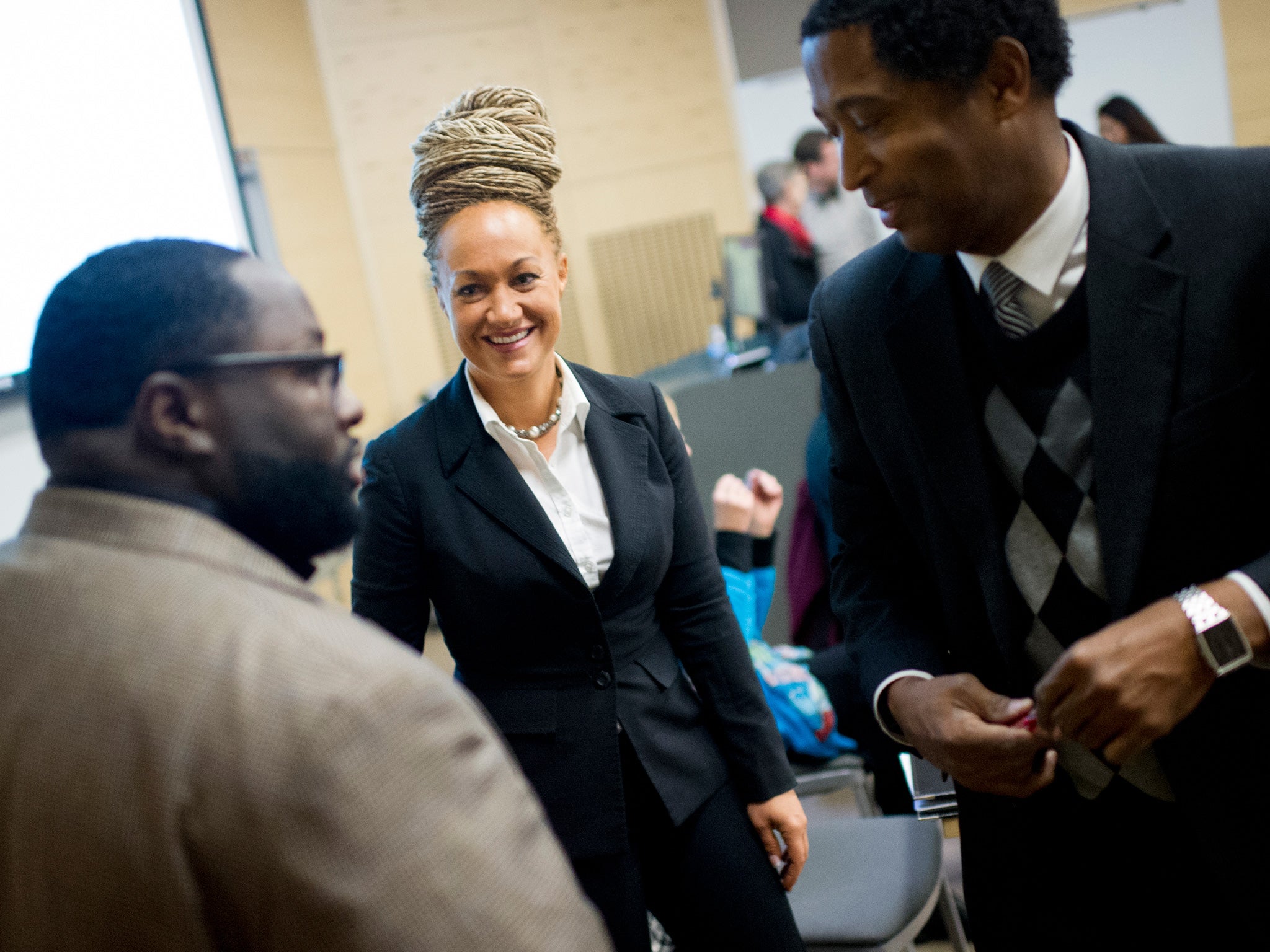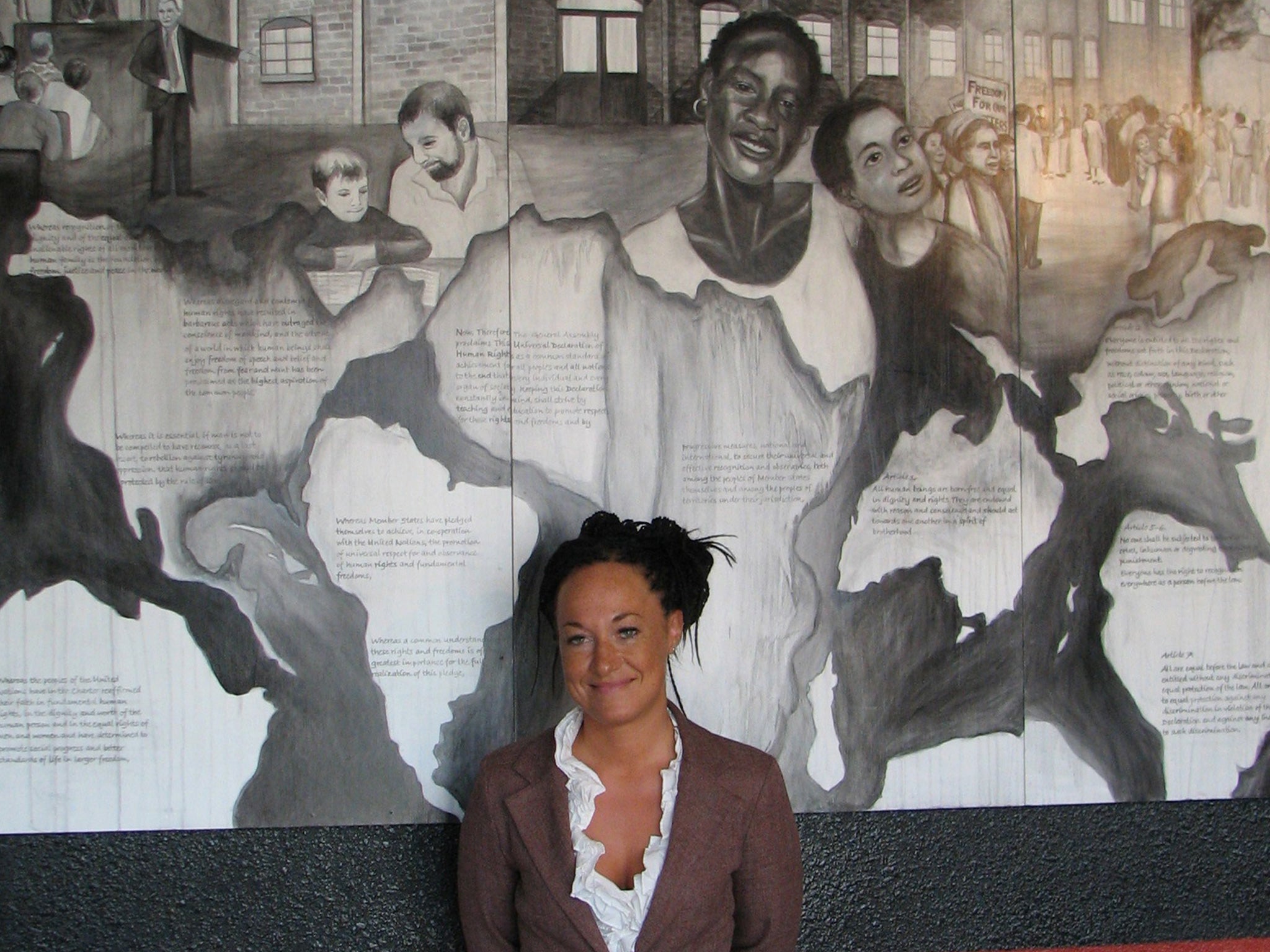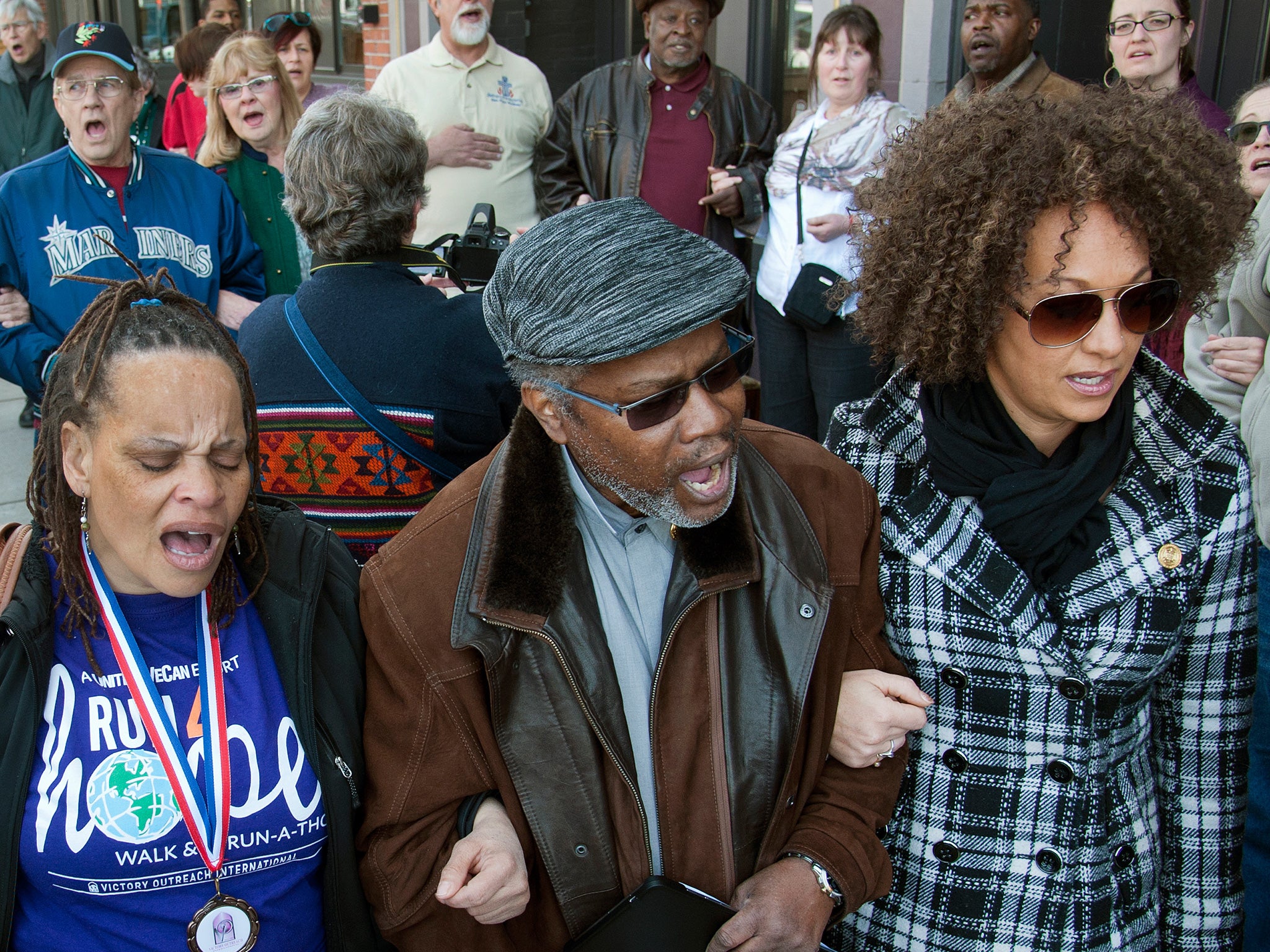Rachel Dolezal: What the rights activist's story says about being white in modern America
The case raises questions about self-identifying with regards to race

Your support helps us to tell the story
From reproductive rights to climate change to Big Tech, The Independent is on the ground when the story is developing. Whether it's investigating the financials of Elon Musk's pro-Trump PAC or producing our latest documentary, 'The A Word', which shines a light on the American women fighting for reproductive rights, we know how important it is to parse out the facts from the messaging.
At such a critical moment in US history, we need reporters on the ground. Your donation allows us to keep sending journalists to speak to both sides of the story.
The Independent is trusted by Americans across the entire political spectrum. And unlike many other quality news outlets, we choose not to lock Americans out of our reporting and analysis with paywalls. We believe quality journalism should be available to everyone, paid for by those who can afford it.
Your support makes all the difference.Passing in this country has usually operated in one direction: black skin passing for white, marginalization traded for privilege, the burden of the minority cast off.
Until now. Enter Rachel Dolezal, 37, the head of the NAACP in Spokane, Wash., who seized headlines and set social media afire this week when relatives claimed that she is a white woman who has been passing as African American.
Her story was a head-scratcher for many, raising questions about the determination to self-identify when it comes to race. Is “passing in reverse” a thing? And what does Dolezal’s supposed decision say about being white in modern America? Was whiteness the weight she cast off?
“In this society, people would prefer to be identified with the race that is least stigmatized,” says Derald Wing Sue, a professor of psychology and education at Columbia University, where he has studied racial identity. “It baffles everyone when it goes the other way.”

But it does not surprise Sue, who has studied the ways white Americans become sensitive to racial dynamics.
How does it happen? First, he says, they “awaken to the existence of racism in both themselves and their significant others. Then they begin to see the negative impact of racism.”
From there, some will decide to stand up against racism, but others will go further and “over-identify” with the marginalized group. “They want to be black,” Sue says. Which leads to a whole other set of problems. Dolezal has become an archetype of white guilt played to its end.
Her story, as told by relatives and associates, begins in Montana, where her parents say that they are Caucasian and European (“Czech, German and a few other things”), and that their daughter is white, too. Dolezal was raised alongside the four black children her parents adopted. She later spent a great deal of time in black communities during college, attending graduate school at Howard University, which is referred to as the “Mecca” for its central place in black scholarship. In November 2014, Dolezal was elected president of Spokane’s NAACP chapter, where she drew attention after claiming to be the victim of a number of hate crimes.
Sue finds the story extreme, but not unheard of. The 1990s saw the rise of self-identifying “wiggers,” and roughly 70 to 75 percent of the people buying rap music during those years were white. Decades earlier, as a young Asian man on the campus of the University of California at Berkeley, Sue recalled white allies who joined with black, Asian and Latino activists to “demonstrate against social injustice and take ethnic studies classes. They felt ashamed of being white.”
But that shame rarely led to the adoption of another racial identity. Such a misrepresentation carries the sting of betrayal — but as Dolezal told a reporter for the Spokane Spokesman-Review this week, “There’s a lot of complexities.”
After all, this is a country where the one-drop rule was once the standard — even a smidgen of black heritage marked one as African American and subject to the nation’s racial caste system. So maybe Dolezal is black — all it takes is a drop, they say.

With the past and present swirl of racial mixing, revealed often on the PBS series “Finding Your Roots,” on which Harvard scholar Henry Louis Gates Jr. unveils surprising family tree branches — former secretary of state Condoleezza Rice’s genetic makeup is 51 percent African, 40 percent European and 9 percent Native American — anything is possible.
Dolezal, whose childhood pictures show a fair-skinned, freckled girl with straight hair, is not alone in her muddy identity. Sen. Elizabeth Warren (D-Mass.) ran into trouble on the campaign trail when it was revealed that she had once identified herself as part-Native American without proof of her ancestry. But Dolezal’s adoption of braided hair extensions and spiral curls, styles favored by black women, are intentional ways of getting others to see her as she apparently sees herself.
The national NAACP — an organization founded by blacks and whites — has generally taken the situation in stride. In a statement, the association stood behind Dolezal’s advocacy record and said, “One’s racial identity is not a qualifying criteria or disqualifying standard for NAACP leadership.”
Take, for example, Walter White, born in 1893. Blue-eyed and blond-haired with fair skin, the product of Atlanta’s black community had more white ancestors than black, according to some accounts. And he saw himself as black, although he passed as white to enable his travels through the South investigating lynchings and hate crimes. Later in life, he married a white woman and was forced to defend himself against accusations that he was white passing as black — all while serving as the national head of the NAACP from 1931 to 1955.
© Washington Post
Join our commenting forum
Join thought-provoking conversations, follow other Independent readers and see their replies
Comments